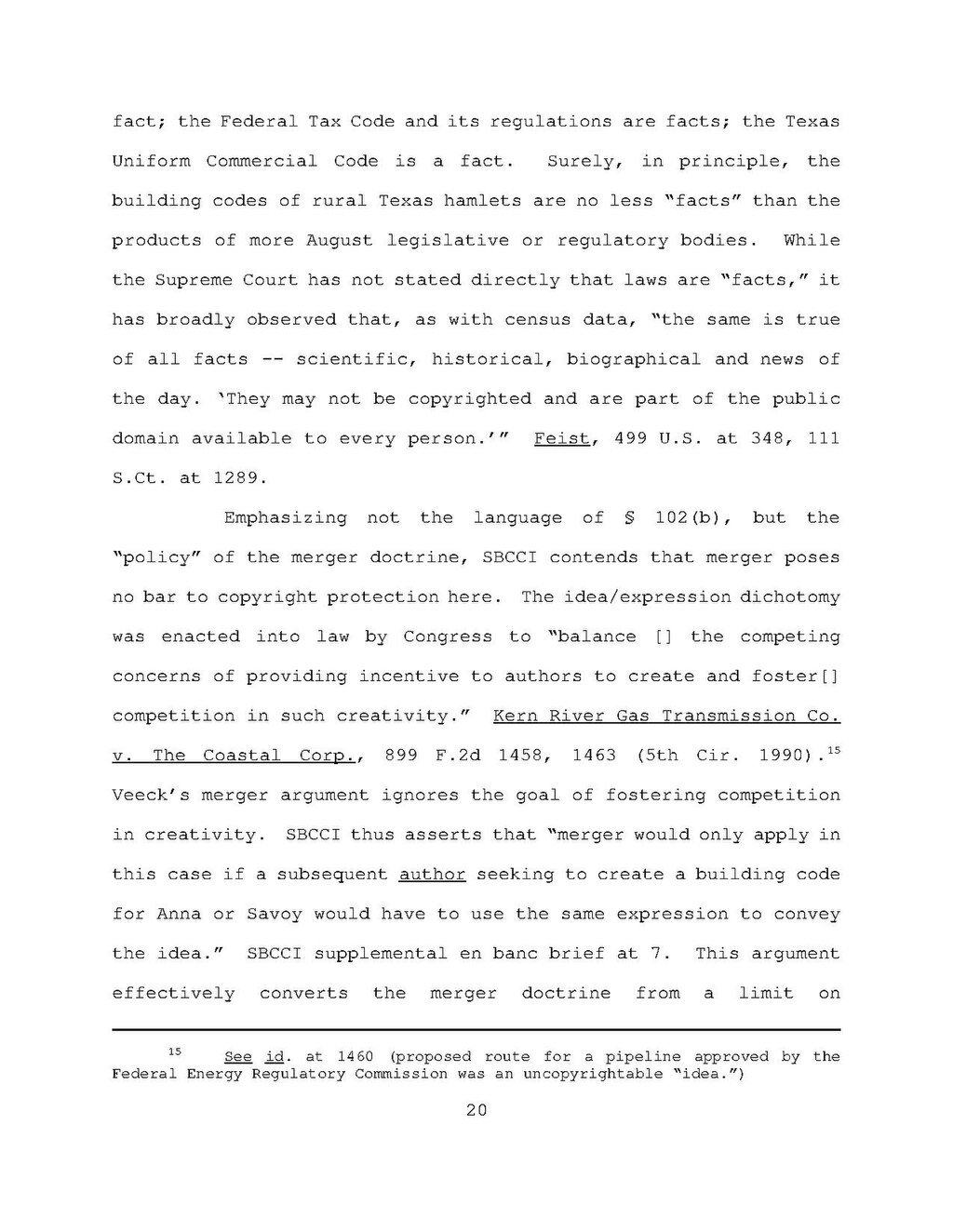fact; the Federal Tax Code and its regulations are facts; the Texas Uniform Commercial Code is a fact. Surely, in principle, the building codes of rural Texas hamlets are no less "facts" than the products of more August legislative or regulatory bodies. While the Supreme Court has not stated directly that laws are "facts," it has broadly observed that, as with census data, "the same is true of all facts—scientific, historical, biographical and news of the day. 'They may not be copyrighted and are part of the public domain available to every person.'" Feist, 499 U.S. at 348, 111 S.Ct. at 1289.
Emphasizing not the language of § 102(b), but the "policy" of the merger doctrine, SBCCI contends that merger poses no bar to copyright protection here. The idea/expression dichotomy was enacted into law by Congress to "balance [] the competing concerns of providing incentive to authors to create and foster[] competition in such creativity." Kern River Gas Transmission Co. v. The Coastal Corp., 899 F.2d 1458, 1463 (5th Cir. 1990).[1]Veeck's merger argument ignores the goal of fostering competition in creativity. SBCCI thus asserts that "merger would only apply in this case if a subsequent author seeking to create a building code for Anna or Savoy would have to use the same expression to convey the idea." SBCCI supplemental en banc brief at 7. This argument effectively converts the merger doctrine from a limit on
- ↑ See id. at 1460 (proposed route for a pipeline approved by the Federal Energy Regulatory Commission was an uncopyrightable "idea.")
20
